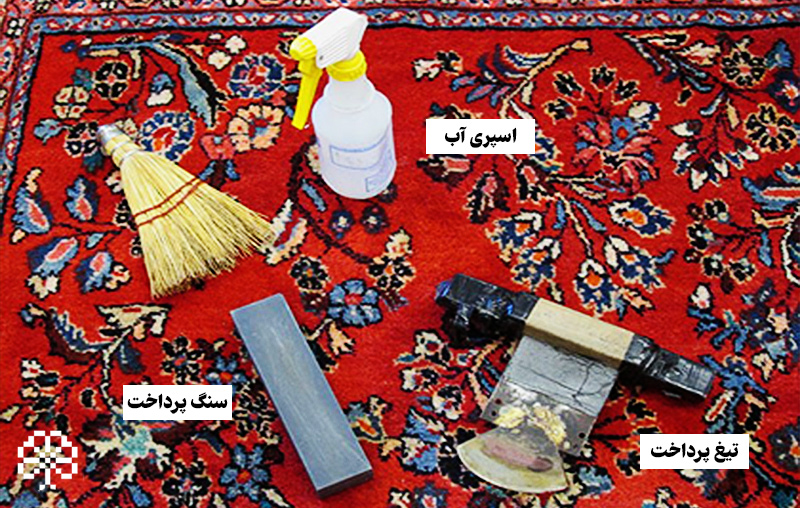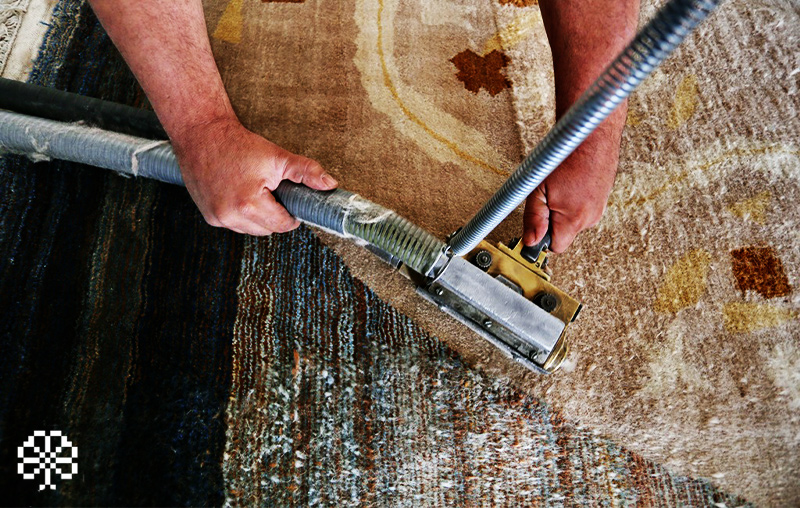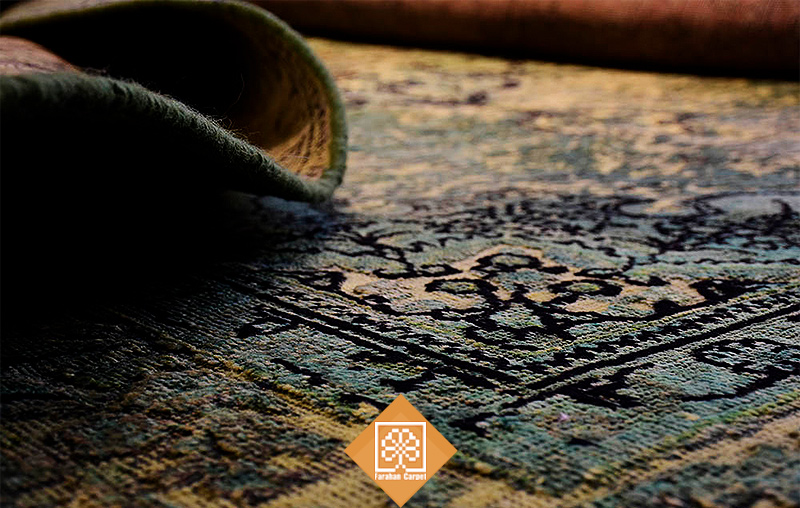What is the payment of a handmade carpet and how is it done?

Finishing of hand-woven carpets is one of the most important steps in the production and supply of hand-woven carpets and panels, which is done before presenting the carpet to the market and sales centers. But there is a question for many lovers of the art of carpet weaving, how is this done?
In this article, we are going to examine the finishing process of the handmade carpet and explain the steps to do it. So we recommend that you stay with us until the end of this article.
What is the payment of handmade carpet?
Handwoven carpet has three main dimensions. The first dimension: length or warp – the second dimension: width or weft and the third dimension: knot or pile. The act of payment is directly related to the third dimension, i.e. carpet pile. Carpet pile is exactly the threads (cream) that you step on and walk on. These piles naturally have unevenness during the weaving of the carpet, as it is done by hand, which affects its appearance and beauty, and for this reason, these unevennesses must be removed by using a special method. This is called the payment of handmade carpet.
If you observe the texture of the hand-woven carpet closely, you will notice that many of the threads on its surface are irregular and to some extent have a sloppiness, which makes the beauty and original effect of the carpet unclear, and therefore it is necessary to check this before selling it. The issue should be resolved and in fact the payment is done with two main purposes:
smoothing the surface of the carpet
Revealing the main designs and colors of the carpet
Carpet payment time
So far, we have realized that we need to polish the handwoven carpet to remove cream or extra fluff from the surface of the carpet; But the question that arises here is how many ways can this be done?
Pay attention that the act of polishing the handwoven carpet and covering is a necessary and obligatory thing and this should be done and it is not the case that some carpets are not polished. But this is generally done in two main times:
During carpet weaving
After finishing the carpet weaving
1. Payment during carpet weaving
The act of paying during carpet weaving is done in one way and by using scissors and it is done by the carpet weaver himself. In this case, after weaving 2 additional rows (sometimes 4 rows), the carpet weaver cuts the ends of the piles using scissors, and an important part of the finishing process is done by the carpet weaver himself.
This is done according to the carpet weaving traditions in some provinces and cities of Iran; Weavers in Isfahan, Kashan, Qom, Arak, Varamin, Azerbaijan and some western regions of the country basically use payment during carpet weaving.
The advantage of using polishing during carpet weaving and using scissors is that after cutting the piles, the carpet weaver can see the patterns more accurately and clearly, and if there is a problem or error in the elevation, design breakage and … observe and identify and fix it in time.
2. Payment after finishing carpet weaving
We have said that some weavers in Iran’s cities use polishing or shearing during carpet weaving, but weavers from some regions of Iran such as Kerman, North Khorasan (Mashhad, Sabzwar, Kashan) prefer to do the polishing after finishing the carpet weaving and transfer. Carpets to be paid by the payers.
One thing you should pay attention to is that the process of polishing a handwoven carpet after finishing the carpet weaving is used both for carpets that have not been polished during carpet weaving and for carpets that have also been polished during weaving. are That is, whether the weaver has used scissors during weaving or not, in any case, the act of payment must be done after finishing the work.
Payment after the work is done in two main ways, depending on the type of raw materials used in the carpet and how it is woven; One of them or a combination of them is used:
A) manual or traditional payment
b) Machine or new payment
A) Manual finishing of the carpet
As its name suggests, this payment method is done by hand by a master craftsman and without the use of any electric machine. The working method is that the craftsman continuously pulls on the surface of the carpet with a razor to remove and separate the long piles and unevenness from the surface of the carpet.
The payment master uses special equipment in the manual method;
1. Paying razor: Paying razor is the most important tool for paying. This nail is basically made by hand and looks very similar to the blade of an ax, with the difference that its handle must be designed in a way that is level with the blade until the time when the craftsman pulls the blade on the carpet by placing its handle. On the surface of the carpet, the creation of low and high areas in the carpet should be prevented and the entire surface of the carpet should be smooth and smooth.
2. Polishing stone: The polishing razor must be very sharp, to the point where it is said that its sharpness must be as sharp as a shaving razor! That’s why the polishing master uses a special ring to sharpen this blade continuously.
3. Polishing scissors: In places where the polishing razor cannot work very well, such as the edges and layers of the carpet, the master craftsman performs the polishing work using the scissors he has.
4. Spade shovel: a tool that looks like a hand shovel and is used by the master craftsman to fix the scratches on the carpet.
5. Finishing board: In order to finish the handmade carpet, it is necessary to spread the carpet completely on a smooth and even surface, and the masters use a big board for this and spread the carpet on it.
6. Water spray bottle: In manual carpet polishing, it is necessary to moisten the carpet a little, and that’s why master craftsmen have water sprays similar to salt glass bottles that spray a little water on the carpet before starting work.
b) Machine polishing of the carpet
The polishing of handwoven carpets is certainly not behind the technology like many other manual professions and machines are designed to make it easy.
Carpet polishing machines do exactly the work of the polishing blade and by dragging them on the surface of the carpet, its heights and excess lint are removed. It is also necessary to pay attention to the fact that the use of these machines should be entrusted to a professional person, because a large amount of the value and quality of the carpet may be lost with one mistake.
If the piles of the carpet are shortened too much with these machines, it will cause its value to be greatly reduced, and in the term, it is called short sleep or short sleep. If you are going to buy a carpet, do you want to find out if the carpet is properly covered or not? Check its surface so that it is one hand and on the other hand, by running your hand on its piles, make sure that the piles can be touched under your hand, otherwise the carpet is over-polished and the nap is short.
What is the best way to pay for a handmade carpet?
It must be said that this question is wrong! Because the finishing method can change depending on the type of carpet, and each carpet uses one of these finishing methods or a combination of them according to the texture and fibers used in its texture.
For example, for carpets with more than 30% of its fibers from silk, you should not use the machine polishing method because the heat generated by the polishing machine on its surface will cause burns in the silk fibers.
On the other hand, woolen carpets are finished in this way because of the longer and more resistant fibers that they have. At first, after finishing the weaving, the piles are shortened by machine finishing, and then they are delivered to the master craftsman who will finish the work by hand. And then, after finishing the work, the carpet goes to the washing place for washing, and then after drying, the carpet is brought to the polishing master so that, if necessary, he can do something on it and remove the extra lint.
In order to become a suitable carpet for sale, the raw hand-woven carpet must go through the process of facing correctly. If you have any questions about paying for a handmade carpet and its steps, share it with us in the comments section.





